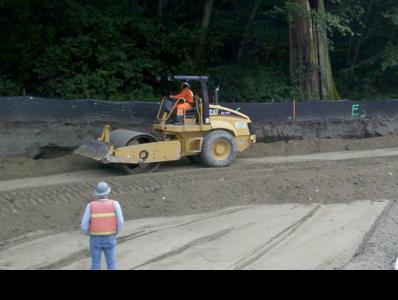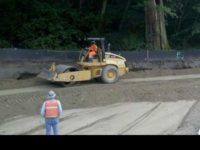The site is an approximately 5-acre parcel of vegetated unoccupied land where secondary steel slag was placed as fill between 1984 and 1990. In addition to containing arsenic, antimony, beryllium, lead, and nickel above background levels, the slag contains lime ash, which reacts with surface and groundwater to increase the pH to levels above the regulatory limit. Investigations at the site began in 1992, and various cleanup actions and an interim action have been conducted to mitigate discharge of surface water with high pH levels from a stormwater detention pond and seeps on the hillside at the site to Garrison Creek. Investigation results have also confirmed that metals associated with the slag are not affecting soil or groundwater. However, the lime ash is the source of the elevated pH in surface water leaving the site, triggering a need for further cleanup activities.
Prior to Farallon’s involvement in the project, the high-pH water was collected in a coffer dam, pumped into a water storage tank, and subsequently pumped out and transported off the site for disposal. Farallon was engaged to undertake the wastewater management project and engineer a more-permanent solution to meet regulatory requirements in a cost-effective manner. Farallon installed sumps at high-pH seep locations to collect the seep water, inject it with carbon dioxide, which reacts with the high-pH seep water to reduce the pH, and pump it into a water storage tank. A wastewater discharge permit was obtained to allow the treated water to be discharged to the City of Kent sanitary sewer system, eliminating the need for costly off-site disposal. Farallon’s design of the wastewater treatment system incorporated a control mechanism that enables remote monitoring of the system and engages safety measures to shut down the system and notify Farallon if a malfunction occurs. Farallon’s enhancement of the treatment system has resulted in wastewater that meets the criteria set forth in the discharge permit.
A permanent cleanup action for the site has been successfully negotiated with the Washington State Department of Ecology and includes excavation and off-site disposal of 16,500 cubic yards of secondary steel slag and restoration of the site. Permanently removing slag from the site will protect water quality and aquatic life in streams that receive surface water discharging from the site. The permitting and public comment process has been completed, and excavation will be completed during fall 2010.

